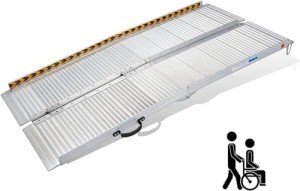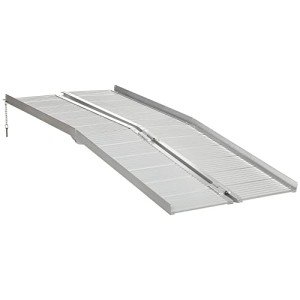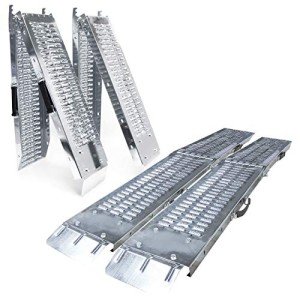In a world that increasingly values accessibility, portable folding aluminum wheelchair ramps have emerged as vital tools for those who rely on mobility scooters. These ramps enable individuals with limited mobility to gain independence, access their homes, and navigate public spaces with ease. This guide will explore the key features, benefits, and considerations when choosing a portable folding aluminum wheelchair ramp for scooters.
Understanding Portable Folding Aluminum Wheelchair Ramps
Portable folding aluminum wheelchair ramps are lightweight yet sturdy solutions designed for easy transportation and quick deployment. Made from high-quality aluminum, these ramps are corrosion-resistant, making them ideal for both indoor and outdoor use. Their foldable design allows users to transport them conveniently in a vehicle or store them without requiring a large space.
Key Features
-
Durability and Stability: Aluminum is known for its strength-to-weight ratio, providing durability without the heft of traditional materials. This ensures that the ramp can support scooters and their users without compromising safety.
-
Lightweight Design: Most portable aluminum ramps weigh between 20 to 30 pounds, making them easy to carry and handle. This is particularly important for individuals who may struggle with heavier equipment.
-
Folding Mechanism: The folding feature enables quick setup and takedown. This design also makes it easier to store the ramp when it’s not in use, improving the overall convenience for users.
-
Non-Slip Surface: A non-slip surface often accompanies these ramps, ensuring that scooters can ascend and descend safely, even in wet or challenging conditions.
-
Variety of Sizes: Portable ramps come in various lengths and widths to accommodate different scooter sizes and inclines. Whether you need a ramp for stairs, curbs, or vehicles, there’s a model suited to your needs.
Benefits of Using Portable Folding Aluminum Ramps
-
Enhanced Mobility: One of the most significant advantages of these ramps is the enhanced mobility they provide. With a ramp, individuals can access areas that may otherwise be difficult to reach, boosting their independence.
-
Ease of Use: Portable folding ramps are user-friendly. Most models can be set up in seconds, allowing users to quickly access their scooters without needing assistance.
-
Versatility: These ramps can be utilized in various settings, including homes, offices, parks, and public transportation. Their adaptability makes them ideal for individuals on the go.
-
Cost-Effective Solution: Compared to the structural modifications that may be required for accessibility, portable ramps offer a cost-effective alternative. They do not require permanent installation and can be used wherever needed.
-
Safety Compliance: Many portable aluminum ramps meet or exceed safety standards, providing users with peace of mind when navigating different environments.
Considerations When Choosing a Portable Ramp
While portable folding aluminum ramps offer numerous advantages, it’s essential to consider a few factors when choosing the right one:
-
Weight Capacity: Ensure that the ramp can support both the weight of the user and their scooter. Most ramps have weight limits, so confirm that these specifications match your needs.
-
Length and Incline: The ramp length determines the incline steepness. For stairs or higher elevations, a longer ramp may be necessary to maintain a manageable slope.
-
Width: Ensure the ramp is wide enough to accommodate your scooter, allowing for safe and easy navigation.
-
Portability Features: Look for ramps that come with handles or carrying cases to ease transportation.
-
Warranty and Support: Quality ramps often come with warranties. Check if the manufacturer provides support and guidance for any potential issues.
In an ever-evolving landscape focused on inclusivity and accessibility, portable folding aluminum wheelchair ramps serve as a vital resource for those using mobility scooters. Their combination of lightweight design, durability, and ease of use makes them indispensable for enhancing mobility and independence. By understanding their features, benefits, and considerations, users can make informed decisions that improve their quality of life and facilitate greater freedom and access to the world around them.







